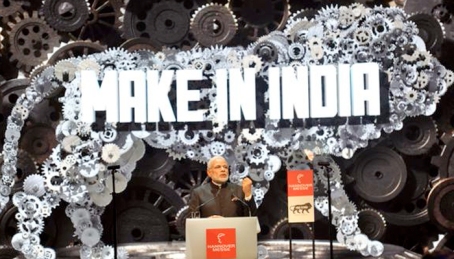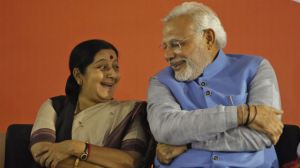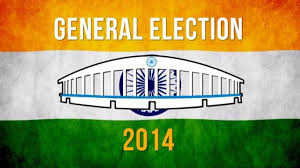16th October, 2015 marks the repeal of National Judicial Appointments Commission(NJAC) Act (2014) by the Supreme Court of India. This day is a historic event as the debate on basic structure of Indian constitution comes to limelight again. It was Kesavanada Bharati vs. State of Kerala case in 1973 during which the Supreme Court formulated “The Basic Structure Doctrine”. Of course, the term “basic structure” is defined as when required.
The whole nation was surprised by the Supreme Court’s judgment that attracted both criticism and appreciation.
Here is what ‘elected’ representatives have to say:
“Indian Democracy cannot be a tyranny of the unelected over the elected and if so, the democracy would be in danger” — Arun Jaitley, Union Finance Minister.
“Surprised by the judgment, NJAC was supported by both houses of parliament and had 100% support” – Sadananda Gowda, Union Law Minister
“It is a flawed judgment ignoring the unanimous will of parliament, half the state legislatures and the will of the people” – Mukul Rohatgi, Attorney General of India
But, the eminent lawyers such as Prasanth Bhushan, Ram Jethmalani and some of the former chief justices voiced the contrary but in support of the SC’s verdict.
This blog further dwells upon explaining the issue in brief and constitutional interpretation of the same.
What is the issue?
After NJAC is scrapped down by terming it ‘unconstitutional’ by the Supreme Court, the old collegium system is restored. The collegium setup is seen as judges appointing judges. The collegium system is 22-year-old in which a collegium of senior most judges of Supreme Court led by Chief Justice of India recommend appointments and transfers of all judges and chief justices of Supreme Court and High Courts. The President of India will make judicial appointments upon these recommendations. The collegium system is a result of three judgments of the Supreme Court which is famously known as “Three Judges Case” meaning three judgments from three different constitutional benches of the apex Court. There have been several flaws in the Collegium system that lack transparency in making judicial appointments. Taking note of this, as soon as the new Government arrived in Delhi in 2014, it started working on the issue. Then, came up with the new “National Judicial Appointments Committee” through a constitutional amendment (99th amendment) adding it to the Article 124a of Indian constitution.
The composition of NJAC:
-Chief Justice of India as ex officio chairman
-Two senior most judges of Supreme Court next to CJI
-Union Law Minister
-And Two Eminent persons (at least one from SC/ST/minorities including women) chosen by CJI, Prime Minister and the Leader of Opposition.
This composition would recommend the appointments/transfers to the President who makes it.
The main controversy lies in the composition. The inclusion of non-constitutional outsiders (two eminent persons) for the crucial job of judicial appointments is the point of conflict. NJAC act gives the power of veto to any of the two members of the committee to overrule to decisions made by other members. After all two eminent persons are chosen by political leaders, the outsider influence on judiciary becomes inevitable if this system is implemented.
Constitutionally Speaking:
The Supreme Court of India quashed NJAC act by terming it “unconstitutional” because it feels that the act violates “basic structure” of Indian constitution which is completely defined by the Supreme Court as and when required. That means Indian constitution does not explain “basic structure” of it, however being interpreted by the judiciary.
Article 13 of Indian Constitution declares that all ‘laws’ that are inconsistent with or in derogation of any of the fundamental rights is null and void. This power of “judicial review” is conferred on the Supreme Court (Article 32) and the high courts (Article 226) that can declare a law unconstitutional and invalid. The term ‘law’ includes amendments to the Constitution. The Constitution as a whole implicitly stressed that “the Supreme Court of India is the custodian of Indian Constitution”.
You may think that the article 13 refers to fundamental rights alone but to implement all our fundamental rights in the full spirit, an “Independent Judiciary” is a must. Now, SC in its judgment says “NJAC is a threat to independent judiciary”.
As per Article 368 of Indian Constitution, any constitutional amendment pertaining to the Supreme Court and High Courts require special majority in the Parliament and ratification by half the states. And NJAC successfully passed all stages and got accent by the President of India.
That means the whole process of framing NJAC is absolutely constitutional which is now termed ‘unconstitutional’ by the Supreme Court. But, the process of Supreme Court repealing NJAC is also constitutional.
The question lies in “How two constitutional processes can generate an unconstitutional act? “
This question needs a much broader thinking. The independent judiciary is one of the bedrock principles of democracy. Legislature, Executive and Judiciary are three pillars of The DEMOCRATIC REPUBLIC of India. Each organ has its own functional sphere. Of course, there is some bond between the executive and legislature. The circumstances like the recent judgment cannot be debated as tussle between these organs, instead they all should co-operate with each other to smoothen the democratic processes.
Now, in particular to the NJAC row, it has two solutions:
- Continue with the collegium system through a constant fixing of its flaws.
- It is clear that Supreme Court doesn’t accept the outsider hand on the judicial appointments, the legislature should reconsider the composition of NJAC which is acceptable to the Supreme Court. The legislature should work with judiciary in the first place.
Conclusion: The politician class of the ruling party describes the judgment as tyranny of unelected over elected. Though they have got their freedom of speech which is a fundamental right, it is not the way moving forward. Now, the parliament should find all possible ways to work with the judicial system subject to the sovereignty of judiciary as well as parliament. In a constitution where “Equal protection by law and Equal protection of Law” (Article 14) is the founding principle, the transparency in Judicial appointments is a must.







